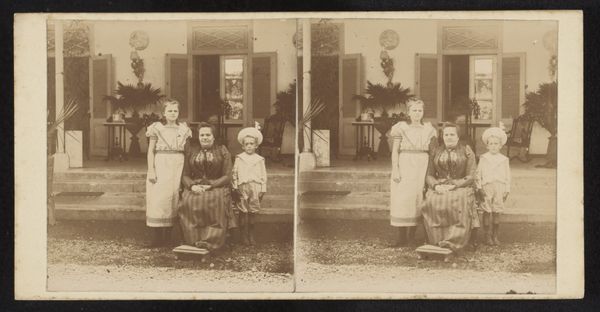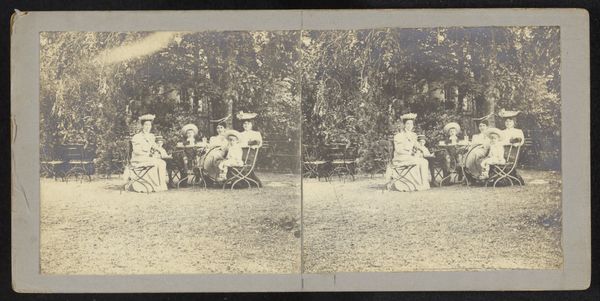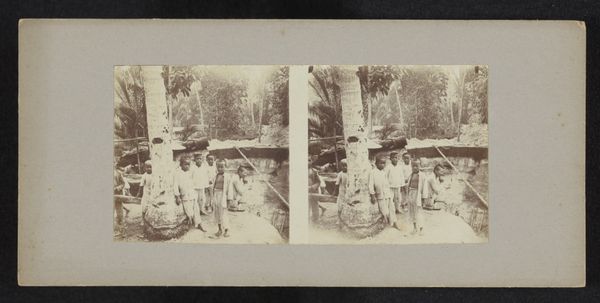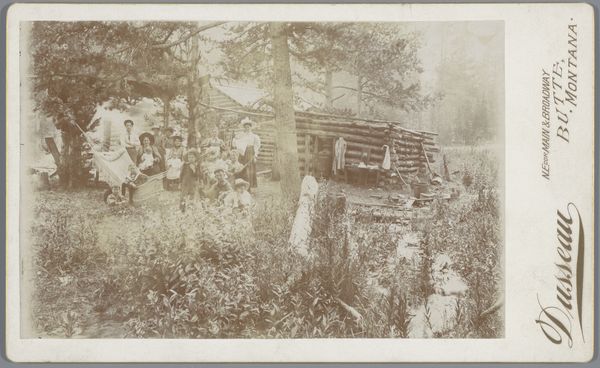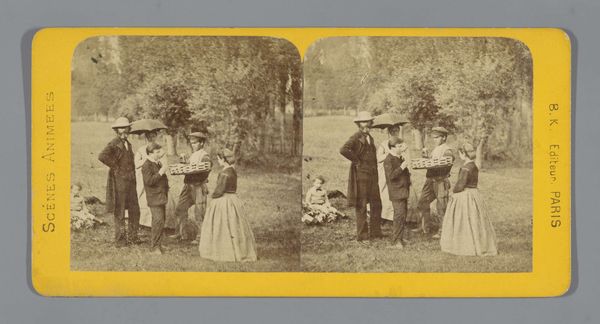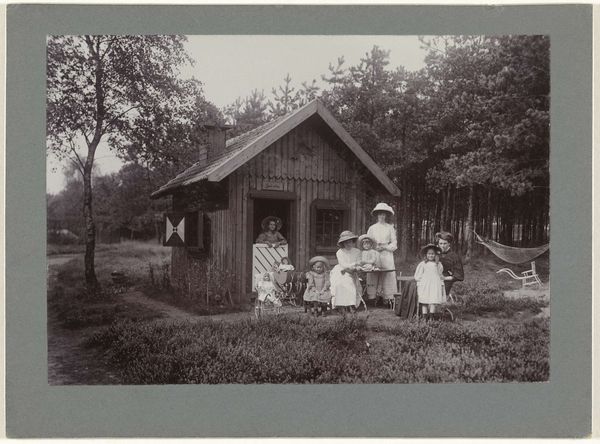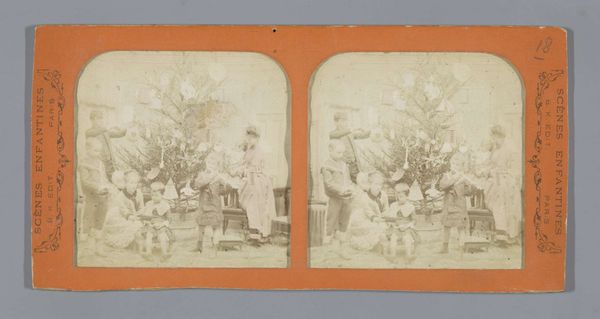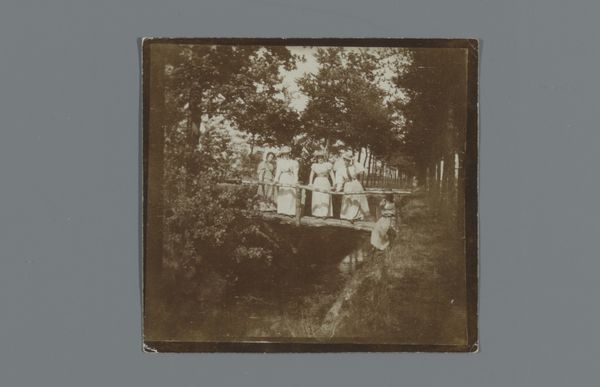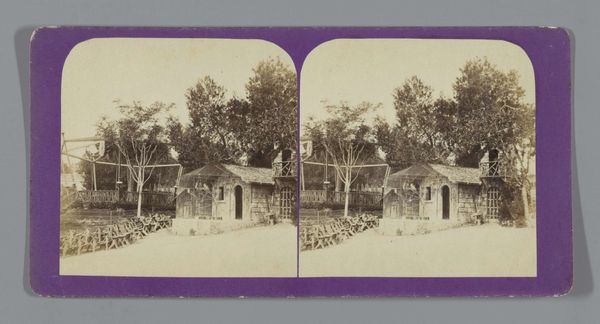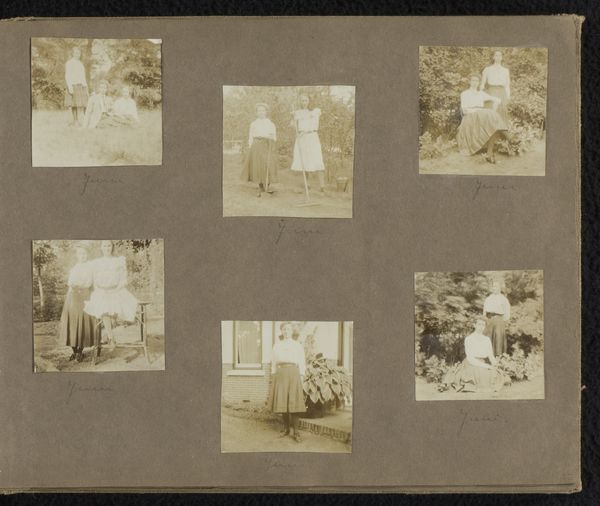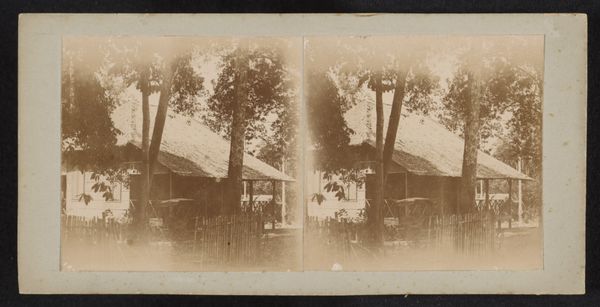
photography
#
portrait
#
still-life-photography
#
16_19th-century
#
photography
#
group-portraits
#
realism
Dimensions: 8 × 8.3 cm (each image); 8.8 × 17.6 cm (card)
Copyright: Public Domain
This stereograph was made by Martin Morrison, a late-19th century photographer. It presents two almost identical albumen prints side-by-side on a card, giving a three-dimensional effect when viewed through a stereoscope. The process involves coating paper with egg white and silver nitrate, which is then exposed to light through a negative. The result is a sharp image with a distinctive sepia tone, owing to the silver particles in the emulsion. Stereographs were hugely popular at the time. They represent one of the earliest forms of mass media, allowing people to experience faraway places and events from the comfort of their homes. They are an amazing fusion of chemistry, optics, and entrepreneurial vision. The final product, in its card-mounted format, could be easily distributed and consumed, contributing to a visual culture shaped by mass production and consumption. It’s a modest thing, but it shows how photography democratized access to images and experiences, a pivotal shift in the history of visual culture.
Comments
No comments
Be the first to comment and join the conversation on the ultimate creative platform.

